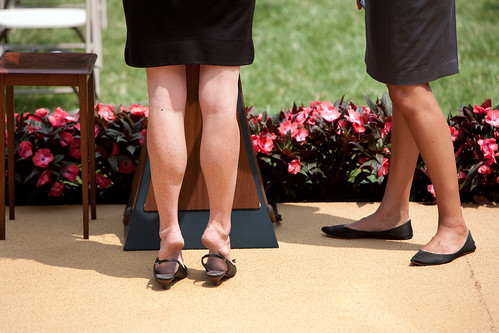
This is sort of the perfect dress; for what I want to wear to my party of Saturday, that is. I'm still at a total loss for what I'm going to wear and I really don't want to give up and go for one of the boring dark dresses that I already have. The only problem with this dress is that 1. it's
$300, and 2. it's sold out. My mom (who's post-designer sewing skills are far superior to mine) could probably make
something sort of like this, but I feel that it's way too late to ask her to make me something this complicated, this late in the game. I'll have to go scour thrift shops tomorrow looking for something appropriate.
I also found a few options on ModCloth that I like, but yet, aren't perfect.

This little black one is totally adorable and ever so
Deschanel, but it's too dark for a summer party. It will be great to wear during the fall at school if I choose to buy it though!

This is a bit more what I'm looking for. It's light, it's blue, it even has the vintage lace. What I'm a bit weary about is the neckline. As my mom pointed out to me, it
would look a bit silly if I ever wanted to wear it to school; I'd have to pile on a few camisoles underneath it to have it pass my school's
dress code.
 The first couple enjoys the Fourth of July.
The first couple enjoys the Fourth of July. Robert Gibbs (White House press secretary) gets dunked.
Robert Gibbs (White House press secretary) gets dunked. At the Vatican.
At the Vatican. In Italy.
In Italy. So this is what our tax dollars are spent on...
So this is what our tax dollars are spent on... The place settings.
The place settings. Heels hurt.
Heels hurt. He writes back to ten randomly selected letters from the public each day.
He writes back to ten randomly selected letters from the public each day. So he's one of those people - people who eat food in the store before buying it.
So he's one of those people - people who eat food in the store before buying it. I love that she's wearing his blazer.
I love that she's wearing his blazer.










































